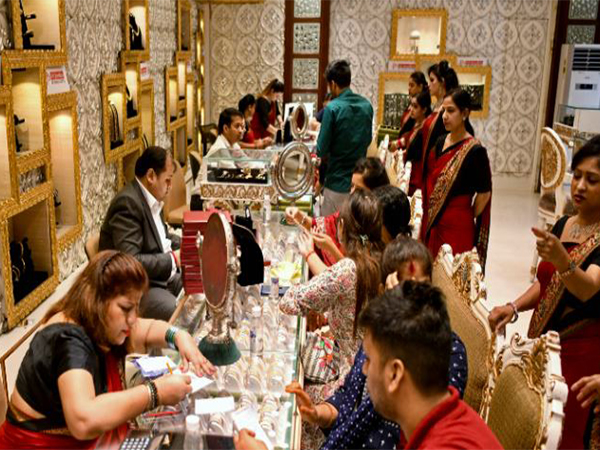
New Delhi: India's domestic jewellery market is projected to grow at a strong compound annual growth rate (CAGR) of 16 per cent between FY24 and FY28, reaching a market size of $145 billion by FY28, according to a report by Minerva Capital Research.
The report highlighted that the Indian jewellery industry is undergoing a significant transformation, with a steady shift from unorganized to organized players.
It said, "India's domestic jewellery market expected to register a 16 per cent CAGR from FY24E to FY28E."
Currently, the unorganized sector holds around 62 per cent of the market share. However, this is expected to drop to 57 per cent by FY28, while the share of organized jewellers will rise to 43 per cent.
This transition is driven by increasing consumer preference for transparency, quality, and branded products.
Region-wise, the southern states dominate the Indian gold jewellery market, contributing about 40 per cent to the total demand in FY23. This is followed by the western region, which accounts for 25 per cent of the market. The average jewellery demand during weddings across India stands at around 225-250 grams.
The report also noted a difference in consumer preferences across regions. Southern consumers largely prefer traditional plain gold jewellery, while the northern and western parts of the country show a higher demand for lightweight and diamond-studded jewellery, particularly in 14k and 18k categories.
In terms of profitability, the report mentioned that the gross margins range between 10 per cent to 14 per cent for plain gold jewellery and 30 per cent to 35 per cent for diamond-studded jewellery.
In FY23, fine jewellery made up nearly 90 per cent of the total jewellery market, valued at approximately USD 63 billion. This includes both gold and non-gold segments.
Several government initiatives are supporting the growth of the organized jewellery sector and promoting exports. These include the reduction in customs duties--on gold and silver from 15 per cent to 6 per cent, and on platinum from 15.4 per cent to 6.4 per cent--as announced in the Union Budget 2024.
Additionally, gold hallmarking was made mandatory from April 1, 2023, and PAN cards are now required for jewellery purchases over Rs 2 lakhs. These measures are aimed at enhancing transparency and domestic value addition.
The jewellery industry is also seeing increasing participation from organized players in rural areas, which account for 58 per cent of the total jewellery demand.
Demand patterns remain seasonal, peaking during wedding seasons (May-June and September-January), harvest periods (September-November and January-March), and festive occasions such as Diwali, Dhanteras, Akshaya Tritiya, and Ugadi.
Another advantage of the gold retail industry is the absence of inventory obsolescence, as old jewellery can be melted and reshaped into new designs, making it a sustainable business model.